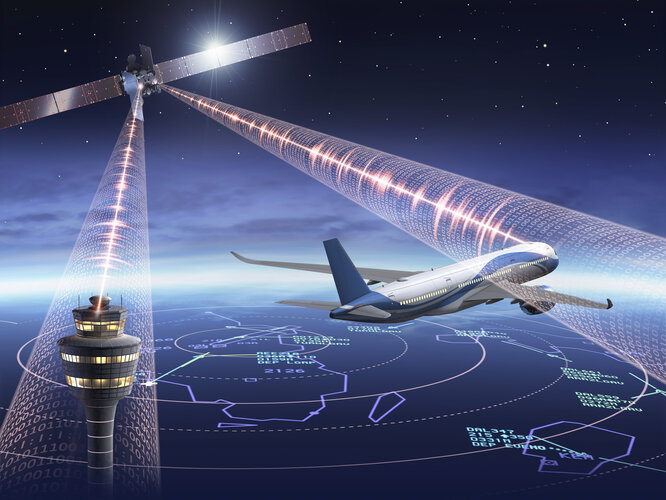An agreement signed today between satellite company Inmarsat and the European Satellite Services Provider, which represents air traffic controllers from seven European countries, will enable final tests of the space-based system to be conducted and evaluated. It is expected to be introduced across Europe by 2023.
ESA has worked with Inmarsat to develop a space-enabled digital alternative to traditional air traffic control that enables pilots to take more efficient trajectories, saving fuel and cutting carbon emissions.
The system – called Iris – uses satellites to exchange data with aircraft, supplementing the terrestrial communications system with digital position reports, clearances and runway conditions, sent via telecommunications satellites between cockpits and air traffic control centres.
Flight plans can be continually updated during the flight to maintain an optimal trajectory towards the destination, minimising the fuel burned and the carbon dioxide emitted.
Iris was first tested on planes flying over Europe in 2018 and debuted in the US on a new Boeing 737-9 operated by Alaska Airlines earlier this year.
Today’s agreement is between Inmarsat and the European Satellite Services Provider, a company founded by seven air navigation service providers from France, Germany, Italy, Portugal, Spain, Switzerland and the UK to operate and provide services for a satellite-based navigation system managed by the European Commission called the European Geostationary Navigation Overlay Service.
It aims to manage final testing and certification – which includes certification from the European Aviation Safety Agency ahead of commercial rollout across Europe. The agreement was signed today at the World Air Traffic Management Congress in Madrid.
Iris will implement its improvements under the European Commission’s single European sky air traffic management research programme, which promises to boost efficiency, capacity and performance of air traffic management worldwide.



